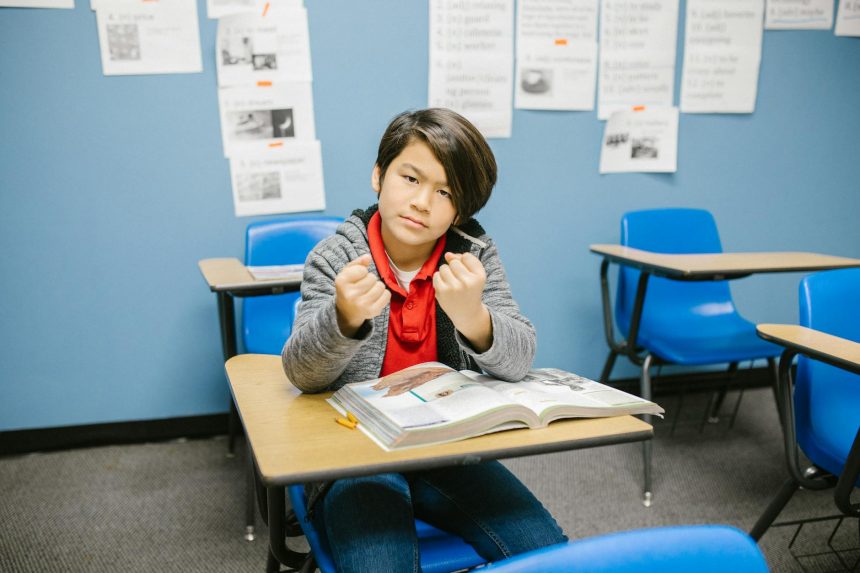Preventing School Threats: 7 Vital Steps for Safer Schools
The safety of our children in schools is a paramount concern for every parent, educator, and community member. In an era where news of potential dangers can spread rapidly, understanding how to effectively address and prevent serious incidents is more crucial than ever. This article delves into comprehensive strategies for preventing school threats, offering actionable insights and a proactive framework to safeguard our educational environments.
Understanding the Seriousness of School Threats
A school threat, whether verbal, written, or implied, can disrupt the learning process and instill fear. These incidents demand serious attention, regardless of their perceived credibility. Ignoring even minor threats can have devastating consequences, underscoring the need for robust response protocols.
What Constitutes a School Threat?
A school threat encompasses any communication, action, or behavior that suggests intent to cause harm to oneself, others, or school property. This can range from direct statements of violence to subtle hints or concerning social media posts. Recognizing these diverse forms is the first step toward effective intervention.
The Ripple Effect: Beyond the Classroom
The impact of a potential school threat extends far beyond the immediate individuals involved. It can create widespread anxiety among students, staff, and parents, erode trust in school safety measures, and even lead to long-term psychological effects. Therefore, a holistic approach to student well-being is essential.
Early Warning Signs: How to Identify Potential Threats for Preventing School Threats
Identifying potential threats early is critical for effective intervention. Many individuals who pose a risk exhibit noticeable changes in behavior or communication prior to an incident. Recognizing these behavioral indicators is a cornerstone of preventing school threats and ensuring school safety.
Behavioral Indicators
Keep an eye out for patterns or significant shifts in a student’s behavior. These are not always definitive signs of intent to harm, but they warrant attention and potential support.
- Sudden withdrawal from social activities or friends.
- Increased aggression, irritability, or unexplained anger.
- Obsession with violence, weapons, or past incidents of school violence.
- Significant decline in academic performance or attendance.
- Expressions of hopelessness, despair, or suicidal ideation.
- Bullying or being a victim of bullying.
Verbal and Written Communications
Direct or indirect expressions of intent to harm should always be taken seriously. This includes statements made in person, through notes, or in creative writing assignments.
Social Media and Digital Footprints
In today’s digital age, social media platforms can often be a place where threats are made or concerning content is shared. Monitoring public posts (where legally and ethically appropriate) can provide valuable insights into a student’s state of mind or intentions. This is an increasingly vital aspect of crisis management.
Proactive Strategies for Preventing School Threats
A proactive stance is the most effective way to foster a secure learning environment. This involves implementing structured programs and cultivating a culture of vigilance and support. These strategies are key to strengthening school safety protocols.
Establishing a Robust Threat Assessment Team
A multidisciplinary threat assessment team is crucial for evaluating and responding to concerning behaviors. This team typically includes administrators, school psychologists, counselors, law enforcement, and other relevant personnel. Their collaborative approach ensures comprehensive assessment and appropriate intervention.
- Identify Concerning Behavior: Gather information from multiple sources (students, staff, parents, community).
- Assess the Threat: Evaluate the individual’s history, current stressors, and access to means.
- Develop an Intervention Plan: Create a tailored strategy focusing on support, supervision, and safety.
- Implement the Plan: Execute the intervention, ensuring resources are available.
- Monitor and Adjust: Continuously review the situation and modify the plan as needed.
- Document Everything: Maintain thorough records of all observations, assessments, and actions taken.
- Communicate Appropriately: Share information with relevant parties while respecting privacy.
For more detailed guidance on establishing threat assessment teams, resources from organizations like the National Association of School Psychologists (NASP) are invaluable.
Fostering a Culture of Open Communication
Encourage students, staff, and parents to report any concerns without fear of reprisal. Anonymous reporting systems can be highly effective. A safe and supportive school climate where individuals feel heard and valued significantly reduces the likelihood of escalation.
Community Involvement and Parental Engagement
School safety is a shared responsibility. Engaging parents, local law enforcement, mental health services, and community organizations can create a powerful network of support and resources. Regular communication and collaborative planning are essential for comprehensive prevention.
Responding to a School Threat: Immediate Steps
Despite best prevention efforts, threats can still emerge. A clear, well-practiced response plan is vital for mitigating harm and managing crisis situations effectively.
Reporting Mechanisms
Every school should have clear, well-publicized channels for reporting threats. This includes anonymous tips lines, trusted adults, and established protocols for staff to follow when a threat is identified. Prompt reporting is key to early intervention.
Collaboration with Law Enforcement
Law enforcement plays a critical role in evaluating the credibility of threats and ensuring public safety. Schools must have established relationships and communication protocols with local police departments to facilitate rapid and coordinated responses. The U.S. Secret Service National Threat Assessment Center (NTAC) provides valuable research and training on this collaboration.
The Role of Support and Intervention
Addressing the root causes of threatening behavior is as important as responding to the threats themselves. Many students who make threats are themselves in distress and require support.
Mental Health Resources
Providing access to mental health professionals, counseling services, and support programs can help students manage stress, anger, and other underlying issues that might lead to concerning behavior. Early access to these resources is a critical component of preventing school threats.
Restorative Practices vs. Punitive Measures
While accountability is important, a purely punitive approach may not address the core issues. Restorative practices, which focus on repairing harm and reintegrating students, can be more effective in fostering positive behavioral change and creating a more inclusive school climate.
Preventing school threats requires a multi-faceted, ongoing commitment from everyone involved in a student’s life. By understanding early warning signs, implementing robust threat assessment protocols, fostering open communication, and providing essential support, we can collectively create safer, more nurturing environments where every student can thrive without fear.
By implementing these strategies, schools and communities can work together to cultivate a safer, more supportive environment for every student. Take action today to strengthen your school’s threat prevention plan.
Featured image provided by Pexels — photo by RDNE Stock project









